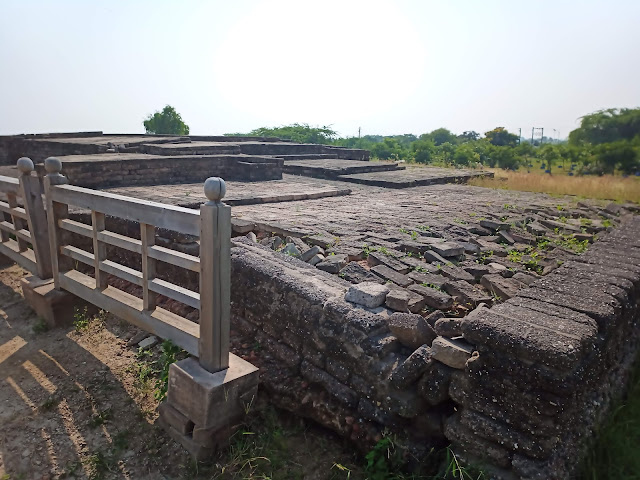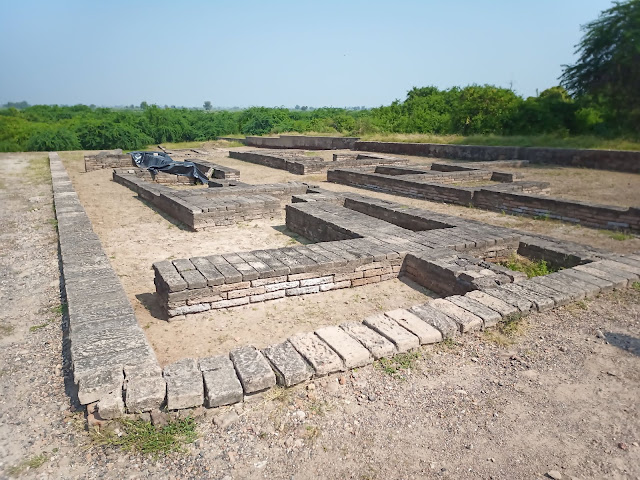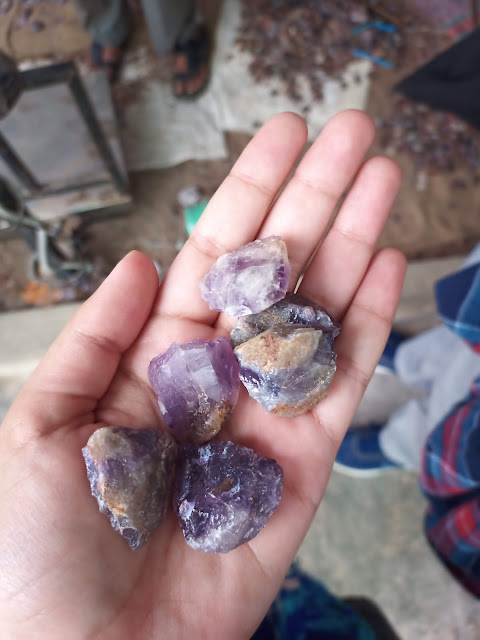An Archaeologist's Guide to Gujarat, India: Lothal
One of the main reasons that I travelled to Gujarat as part of my PhD research trip to India was to visit Harappan/Indus Valley archaeological sites and see where the objects I am researching originally came from. The first site I visited was Lothal.
 |
| Google Maps |
Lothal
Lothal is believed to have been a Harappan port city and is one of the southernmost cities of the Indus Valley civilisation. It is about a two and a half hour drive west of Vadodara, or a one and a half hour drive southwest of Ahmedabad.The ancient settlement consists of the mudbrick architecture that is typical of the Harappans. The site has been inhabited since around 3700 BCE, and was first discovered in 1954 by the Archaeological Survey of India, who conducted excavations there over the next five years.
Below is a picture of the famous Lothal dock, which was manmade and originally filled with sea water that flowed from the Arabian Sea into the Sabarmati River. According to the Archaeological Survey of India, this is the world's earliest dock. During my visit hundreds of dragonflies flitted around the dock and the site, having newly hatched with the changing of the seasons.
Like most Indus cities, Lothal is made up of a raised citadel or upper city with public structures, and a lower city where the majority of the local people lived. Part of the citadel is seen below, along with a storage jar structure from this area.

The lower city was mainly made up of houses. The dry heat of this region attracts a lot of reptiles, and the tarp you can see below had a snake underneath that was rhythmically tapping on the cover as I explored.
For me it was quite astounding to walk through a settlement that was thousands of years old and that had once housed a large population of people. Villagers from the modern local community that was located close by were working on the site during my visit, clearing vegetation that was threatening to reclaim parts of the architecture.
This is a reconstruction of what the site of Lothal may have looked like during its peak, including many houses, the port and a large warehouse structure. Many examples of fired clay objects with inscriptions in the undeciphered Harappan writing were found by archaeologists in the remains of this warehouse.
Lothal is well worth a visit if you are in Gujarat, and is an exciting daytrip out from Vadodara or Ahmedabad where you can take in the Gujarati countryside (and hundreds of cows) on the way.
When heading back to Vadodara, I made a pit stop at the city of Khambhat, which is about halfway between Lothal and Vadodara. Located in Khambhat is a family-owned bead manufacturer Inayat Agate who create beautiful jewellery from precious stones including carnelian, amethyst and lapis lazuli, using local techniques that are a continuation of the ancient Harappan bead-making tradition.
One of the owners of the family business showed me a huge variety of necklaces, bracelets, earrings and other ornaments that were made in their workshop. It was pretty amazing to see the process that the ancient Harappans would have used to create their beads, and to see the polished and gleaming finished products which have been iconic of the Gujarati region for thousands of years.
I ended up buying two lustrous carnelian necklaces and a lapis lazuli bracelet of a beautiful blue. They serve as a nice memento of my visit to Lothal and represent the continuation of the beadmaking tradition in Gujarat over thousands of years.








Comments
Post a Comment